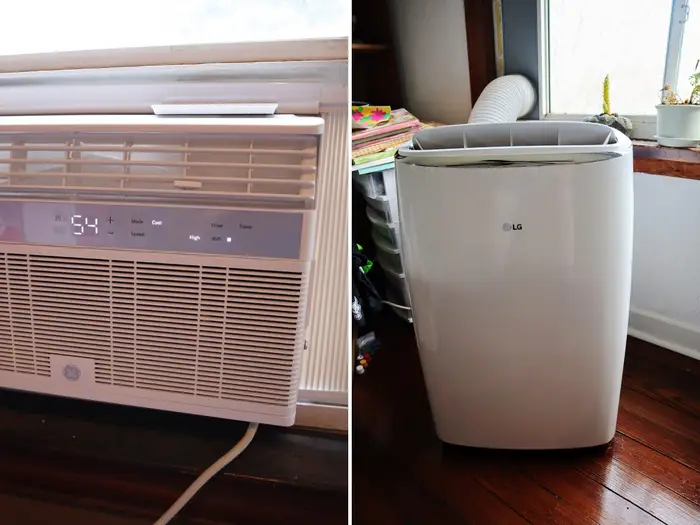Want to save with Paschal? Don’t miss our current offers and specials

Want to save with Paschal? Don’t miss our current offers and specials
Return to Paschal Resource & Education Hub

When summer’s heatwave hits, homeowners often scramble to find the best solutions to cool down their homes. Not everyone is fortunate enough to have an air conditioner or might be looking for more environmentally friendly and cost-effective options to beat the heat. But don’t sweat it; you have numerous practical and creative methods at your disposal to keep your house cool without resorting to traditional air conditioning. Let’s dive into some effective strategies to maintain a comfortable temperature in your home throughout the sweltering summer months.

Before diving into cooling strategies, it’s crucial to understand the three mechanisms through which heat transfers: conduction, convection, and radiation.
Knowing these concepts will guide you to implement effective measures to cool your house, keeping these heat transfer mechanisms in mind.
Strategically managing your windows and doors can significantly aid in reducing your home’s temperature. This is the art of natural ventilation. Let’s explore some methods:
Fans can be a great ally in your quest for a cooler home. But using fans requires some strategy. Here’s how to do it:

Evaporative cooling is a natural and effective method to cool your house. Here’s how you can leverage it:
Blocking the sun’s radiation from entering your house is key to keeping your house cool. Some tactics include:
Insulation and weatherproofing prevent the cool air inside your home from escaping and the heat from outside from entering.

Your appliances and lighting can generate a lot of heat. Modifying their use can help cool your home:
Thoughtful landscaping can provide shade and reduce your home’s temperature.
While the goal of this article is to provide you with an assortment of ways to cool your home without central air conditioning, it’s worth noting that there are more energy-efficient air conditioning options available. Two such options are window air conditioners and portable air conditioners.
Window units are one of the most popular and effective alternatives to central air conditioning. They provide targeted cooling to a specific room, which can help conserve energy and save on electricity costs. They are designed to fit into a standard window frame, and the warm air is expelled directly outside, rather than through a duct system.
When choosing a window AC unit, consider the room size and the device’s BTU (British Thermal Unit) rating. The higher the BTU rating, the more powerful the cooling capacity. But remember, more powerful doesn’t necessarily mean better. An AC unit with too high a BTU rating for a small room can cool too quickly, not allowing the unit to properly dehumidify the air, leaving you cold but clammy.

Portable air conditioners provide mobility and flexibility. They can be moved from room to room, making them a versatile cooling solution. Like window units, they also vent warm air outside through a window via an exhaust hose, and they’re generally easy to install and use.
The downside of portable air conditioners is that they can be less efficient than window units. They often use more energy to cool the same space, and because the entire unit is inside the room, some heat inevitably escapes back into the room. However, if a window unit isn’t an option due to window types or building rules, a portable unit can be a good alternative.
Focus on cooling yourself too. Drink plenty of water, wear lightweight clothing, and take cool showers.

Q1: Can I really cool my home without an air conditioner? Yes, while it may require more active participation than simply adjusting a thermostat, there are numerous ways to cool your home without an air conditioner.
Q2: Are fans effective for cooling? Fans do not actually lower the room temperature, but they make you feel cooler by moving air over your skin and increasing the evaporation of sweat.
Q3: How can I prevent heat from entering my home? Proper insulation, sealing gaps in doors and windows, using window treatments or films, and thoughtful landscaping can all help prevent heat from entering your home.
Q4: How does changing my lighting help cool my home? Traditional incandescent light bulbs generate a significant amount of heat. Switching to energy-efficient LED or CFL bulbs can reduce this heat output.
Q5: What can I do during a heatwave? Stay hydrated, limit physical exertion, block out sunlight, ventilate your home during cooler periods, and use fans to increase airflow.
At the end of the day, there is no substitute for modern air conditioning. If you can’t achieve comfortable temperatures with the methods listed above, then it may be time to either replace your broken air conditioner or install a new one. The Pros at Paschal Air, Plumbing & Electric can provide you with a free estimate on the installation of a new heating & air system. Contact us today to schedule your next appointment.
